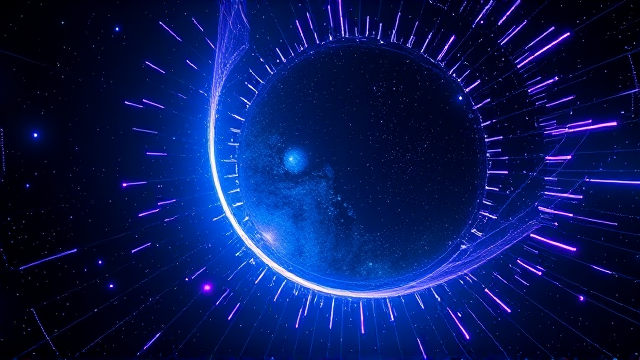This 250-year-old equation just got a quantum makeover
In a development that feels as monumental as the first time humanity grasped the orbital mechanics that would one day take us to Mars, a cadre of international physicists has performed a stunning act of intellectual time travel, pulling a 250-year-old statistical rule—Bayes' theorem—right into the strange, counterintuitive heart of the quantum realm. For centuries, Bayes' rule has been the bedrock of classical reasoning, a mathematical compass for navigating uncertainty by telling us how to update our beliefs in the face of new evidence, all while adhering to the 'principle of minimum change' to avoid unnecessary intellectual whiplash.Now, by applying this very same principle of minimal disturbance to the probabilistic waves that define quantum systems, these researchers have derived, from first principles, a bona fide quantum version of Bayes' rule. This isn't just a nifty analogy; it's a fundamental bridge connecting the familiar world of chance to the spooky world of quantum superposition and entanglement.At the core of this breakthrough is the profound connection they've established between quantum fidelity—a precise measure of similarity between two quantum states, akin to checking if two potential realities are neighbors or strangers in the vast Hilbert space of possibilities—and the sturdy logic of classical probability. This connection mathematically validates and breathes new life into a concept known as the Petz map, a theoretical recovery map that had been somewhat adrift in the mathematical ether, now finding its true purpose as the quantum analogue of Bayesian updating.Imagine you're an astronaut receiving a faint, noisy signal from a probe near a black hole, where spacetime itself is warped; this new framework provides the tools to update your quantum-level model of the probe's state with the least possible disruption, a crucial capability for the fault-tolerant quantum computing and deep-space quantum communication of tomorrow. The implications ripple outward like a wavefunction.This work could fundamentally reshape quantum machine learning, where algorithms must learn from quantum data without collapsing the very information they seek to understand, and it offers a more rigorous foundation for quantum error correction, the field dedicated to protecting fragile qubits from the decohering noise of the environment. It’s as if we’ve discovered that the same cosmic constants that govern the gentle fall of an apple also dictate the furious orbit of a pulsar; the laws of inference, it seems, are universal, operating with a quiet consistency from the gambling tables of 18th-century England to the entangled particles we hope will one day power a quantum internet. This quantum makeover for Bayes’ rule is less an overhaul and more a revelation of its true, deeper nature, suggesting that the universe’s operating manual for dealing with the unknown has been written in a single, elegant language all along, and we are only now beginning to decipher its most profound chapters.
Latest News
In a development that feels as monumental as the first time humanity grasped the orbital mechanics that would one day take us to Mars, a cadre of international
3 hours ago0 comments
In the grand, unfolding narrative of Africa's energy future, a quiet but profound struggle is taking place, one that pits the seductive allure of quick-fix
4 hours ago1 comments
The persistent longevity gap between the sexes, a phenomenon observed not just in our own species but across a remarkable spectrum of mammalian life, from the
6 hours ago2 comments
The skies above Hong Kong performed a spectacular act of atmospheric theater earlier this month, presenting residents of Tsing Yi with a vision so ethereal it
11 hours ago4 comments
In a landmark study emerging from Spain, a nuanced and more intelligent iteration of the celebrated Mediterranean diet has demonstrated a staggering 31%
12 hours ago5 comments
It’s a quiet truth, one that emerges not in the stark light of a clinic but in the whispered confessions of daily life: the weight of depression isn't a
12 hours ago3 comments
For decades, the very first moment of photosynthesis—the miraculous process that powers nearly all life on Earth—has held a secret, a fundamental asymmetry
13 hours ago2 comments
The very ground beneath California, long accepted as a precarious but predictable neighbor, is now revealing a more volatile and terrifying personality.
13 hours ago4 comments
It’s quiet here...Start the conversation by leaving the first comment.
